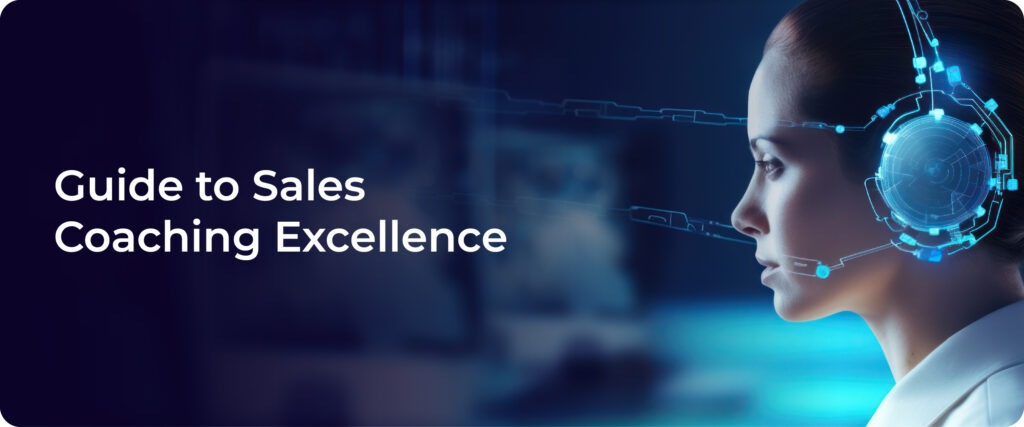According to a study by InsideSales, sales cadences that include an immediate response (within 24 hours) after a prospect engages with an email result in more than 3x the contact rate compared to delayed responses. This highlights the importance of a well-structured cadence call strategy.
Markets today have become so perplexing, it could give a quantum physicist an existential crisis, thus having a clear and consistent approach can make the difference between closing a deal and missing an opportunity. Let’s delve into how to craft a cadence call that delivers results in this blog:
Outline
1. Understanding Sales Cadence Call Fundamentals
2. Planning your Sales Cadence Call Structure
3. Best Practices for Effective Cadence Calls
4. 6 Steps for Creating a Sales Cadence
5. Key Metrics to Track in Sales Cadence Performance
6. Winning Sales Cadence Examples
7. How ConvoZen.AI Enhances Sales Cadence Calls
8. Conclusion
9. Frequently Asked Questions (FAQs)
Understanding Sales Cadence Call Fundamentals
In a business context, cadence refers to the rhythm or flow of consistent communication. Think of it as a structured plan for when and how to reach out to leads.
So, what’s a cadence call? It’s one key touchpoint in that rhythm—used to guide prospects through the sales funnel without overwhelming or ghosting them.
Types of Cadence Calls
There are different types of cadence, depending on your sales strategy.
- Daily Cadence: A daily cadence works best for short sales cycles, high-urgency deals, or hot leads.
- Weekly Cadence: A weekly cadence is great for nurturing longer-term prospects or managing key accounts.
The right frequency keeps you relevant—without becoming a nuisance.
Cadence Calls in Sales and Pipeline Management
In sales operations, cadence isn’t just a buzzword—it’s how teams stay aligned and efficient. A smart cadence improves pipeline visibility, ensures no lead falls through the cracks, and creates momentum across your entire outreach process.
When used correctly, a cadence can turn cold leads into warm conversations and help your team hit revenue goals faster.
Planning your Sales Cadence Call Structure
1. Define Clear Objectives
Every cadence call should have a specific purpose—whether it’s a discovery call, follow-up, or closing pitch. Set outcomes like booking a demo, addressing objections, or moving to the next sales stage.
2. Choose the Right Frequency
Match the cadence to your sales cycle.
- Use a daily cadence for time-sensitive leads or short deal windows.
- A weekly cadence call works better for long-term nurturing or high-value prospects.
3. Use an Agenda Template
Stay consistent and professional by following a repeatable format. A strong cadence call agenda might include:
- Quick recap of previous touchpoints
- Specific updates or new value propositions
- Questions to uncover pain points
- Clear next steps
Make this process easier with ConvoZen.AI by generating AI summaries of previous conversations providing your agents with all the quick insights they need.
Structuring your cadence this way builds trust, keeps reps focused, and increases conversion chances.
Best Practices for Effective Cadence Calls
A well-run cadence can be the difference between progress and a missed opportunity. Here’s how to make every call count:
1. Personalize Every Interaction
Skip the script when you can. Tailor your cadence around the prospect’s pain points, industry, and past interactions. It shows you’re not just dialing for dollars.
2. Stick to a Meeting Cadence
Establish a predictable rhythm—whether it’s a daily cadence for fast-moving deals or a weekly cadence call for long-term plays. Consistency builds trust.
3. Keep It Conversational
This isn’t a monologue. Ask open-ended questions, pause to listen, and engage your prospect like a real human, not a robot.
4. Use Data Smartly
Come armed with context—past emails, previous concerns, product interest, etc. A data-backed cadence call shows you’re invested.
5. Always End with a CTA
Never leave a call hanging. Confirm next steps, set dates, or share a follow-up resource. A good cadence call always moves the needle forward.
To learn more about CTAs and how to close a call refer to this article
6 Steps for Creating a Sales Cadence
Here’s how to build a cadence that includes powerful cadence calls and boosts your conversions:
1. Define Your Target Persona
Know exactly who you’re reaching out to. Tailor your messaging, tone, and timing based on the prospect’s role, industry, and stage in the buying journey.
2. Set Your Goals
Clarify what each cadence or touchpoint should achieve. Are you qualifying a lead, booking a meeting, or following up on a proposal?
3. Choose Touchpoint Channels
A good cadence includes emails, social outreach, and yes—cold calling cadence steps. Mixing formats increases engagement.
4. Establish Frequency & Timing
Decide between a daily cadence, weekly cadence call, or a mix. Avoid overwhelming prospects while staying top-of-mind.
5. Create a Repeatable Structure
Use templates for emails and cadence calls, but allow space for personalization. Consistency improves team efficiency and prospect experience.
6. Track, Test & Optimize
Analyze open rates, reply rates, and call outcomes. Refine your cadence call timing, messaging, and flow based on what actually works.
Bonus Tip: The cadence meaning in business is all about rhythm. A great sales cadence feels natural, not forced, and keeps your pipeline moving forward.
Key Metrics to Track in Sales Cadence Performance
Tracking your cadence call performance helps identify what’s working—and what’s not—so your team doesn’t waste time on broken outreach flows. Here are the key metrics to monitor:
1. Response Rates & Engagement
Track email open rates, call connection rates, and social media replies. High engagement usually signals that your cadence call is reaching the right people with the right message.
2. Conversion Metrics at Each Stage
Are your calls leading to demos? Are follow-ups turning into closed deals? Measure conversions from cold contact to warm prospect, and every step in between.
3. Time-to-Connection
The faster you reach a lead after they engage, the better your chances. Optimizing this metric often means adjusting your daily cadence or call timing.
4. Cadence Completion Rates
How many prospects go through the full outreach sequence? If too many drop off early, your cadence structure may need fine-tuning. Tip: Use a sankey chart to understand the flow of users from the beginning to end.
5. A/B Testing Results
Experiment with different cadence frequencies, messaging styles, and channel orders. Measure which versions drive more engagement and scale what works.
Tracking these metrics ensures your sales cadence stays lean, smart, and results-driven.
Winning Sales Cadence Example
Example 1: Daily Cadence for Hot Leads
- Day 1 – Email #1: Personalized intro + value prop
- Day 2 – Cadence #1: Quick call to introduce yourself and gauge interest
- Day 3 – Email #2: Share a relevant success story
- Day 4 – LinkedIn Message: Mention shared pain point + CTA
- Day 5 – Cadence #2: Push for a meeting or next step
- Day 6 – Email #3: Limited-time offer or urgency-based CTA
- Day 7 – Final Cadence: Breakup call with a friendly tone
This strategy is great for inbound leads, trials, or prospects showing early engagement.
Example 2: Weekly Cadence for Long-Term Nurturing
- Week 1 – Email #1: Introduction + insight or stat
- Week 2 – Cadence #1: Discovery-focused
- Week 3 – Email #2: Resource or invite to webinar
- Week 4 – Weekly Cadence #2: Mid-funnel discussion
- Week 5 – Email #3: Client story or use case
- Week 6 – Final Cadence: Offer demo or consult
It is perfect for enterprise clients or accounts with longer decision cycles.
How ConvoZen.AI Enhances Sales Cadence Calls
ConvoZen.AI is like the Dumbledore behind your every sales rep – guiding their cadence calls with VoC insights, summaries, and ConvoZen.AI magic. Here’s how it levels up your entire sales cadence:
1. Real-Time Call Summaries & Action Items
Every cadence call is automatically transcribed and summarized. Sales reps get instant action points and next steps, so nothing falls through the cracks—especially in a fast-moving daily cadence setup.
2. Cadence Optimization Through Call Insights
ConvoZen tracks engagement across all touchpoints. You’ll know which parts of your cadence call convert, when to follow up, and how to tweak scripts based on what’s actually working.
ConvoZen.AI is also capable of tracking sentiments across a conversation. This way you get to know how customers feel about your resolutions. Sentiment analysis is supported across all forms of conversations which includes call, mail, chats, social media and more.
3. Performance Dashboards for Coaching
Managers can view team-wide performance and individual rep data. Use it to spot winning behavior, refine cold calling cadence, and personalize coaching without micromanaging.
There are also dashboards giving voice of customer data which helps businesses improve their products, service and offerings. A primary source of feedback is always important and difficult to collect but ConvoZen.AI makes it simpler.
Check Performance Management AI by ConvoZen.AI
4. Compliance and Quality Assurance
With automatic compliance checks and scorecards, your cadence stay on-brand and risk-free. Especially valuable during high-volume weekly cadence with enterprise leads.
ConvoZen.AI helps your team move from guesswork to precision—making every cadence call count.
Conclusion
A successful cadence strategy isn’t built overnight—it’s crafted with purpose, tested with data, and refined with every conversation.
With a strong rhythm, clear intent, and ConvoZen.AI powering your insights, your sales team stays steps ahead. Whether it’s a daily cadence or a long-game weekly cadence call, you’re not just making calls you’re going to be making progress with ConvoZen.AI.
Frequently Asked Questions (FAQs)
1. What is a daily cadence call?
A daily cadence refers to scheduled outreach which is usually done via phone that happens every day as part of a structured sales process. It’s typically used for hot leads, follow-ups, or time-sensitive outreach where speed and consistency are critical.
2. What does cadence mean in a business context?
In business, cadence refers to the rhythm or regular timing of activities. A cadence is part of a broader communication schedule that helps teams stay aligned and consistent—whether that’s in sales outreach, team meetings, or pipeline reviews.
3. How do I decide between a daily vs. weekly cadence call?
It depends on the sales cycle and lead type. A daily cadence is ideal for short sales cycles or active prospects. A weekly cadence works better for longer deals, account management, or internal pipeline reviews.
Unleash Your Contact Center’s Potential Today! 👉 Get Started with ConvoZen.AI and Elevate Customer Experience.


